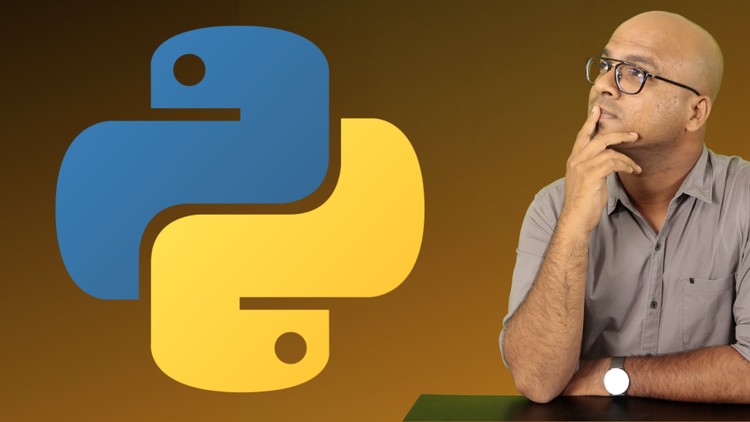Python for Beginners
- Description
- Curriculum
- FAQ
- Reviews
You will learn Python in this course.
Python is one of the fastest-growing languages.
Python is interpreted, object-oriented, high-level, procedure-oriented language
It has different versions
The reason behind it is that there are a huge number of libraries available on the market, many companies and developers are using them, and they can be implemented in many areas.
It is a general-purpose language, as it can be used in Machine learning, GUI, Software Development, Web development, and many more.
Google, YouTube, Dropbox, NASA, and Yahoo use python
Django is a powerful, high-level web framework built with Python that follows the Model-View-Template (MVT) architectural pattern. The Django Software Foundation (DSF) is in charge of maintaining it as a free and open-source framework. The primary objective of Django is to simplify the development process of complex, database-driven websites.
A framework, in general, is a set of pre-written code and tools that provide a structure for building applications. It offers a foundation and common functionalities, allowing developers to focus on application-specific logic rather than dealing with low-level details. Django provides numerous built-in features and libraries that assist in handling common web development tasks, such as URL routing, form handling, authentication, and database management.
There are several reasons why developers choose Django for web development. Firstly, Django emphasizes the concept of “batteries included,” meaning it comes with a wide range of ready-to-use components, reducing the need for external libraries. This saves development time and effort. Additionally, Django promotes the use of reusable code through its modular design, enabling developers to build applications quickly and efficiently.
Django can be used to develop both static and dynamic websites. For static websites, Django can serve as a content management system (CMS) where developers can easily manage and update the site’s content. For dynamic websites, Django’s MVT pattern plays a crucial role. The MVT architecture separates the application logic into three components:
-
Model: Represents the data structure and database schema. It defines the data models, relationships, and interactions with the database.
-
View: Handles the business logic and acts as an intermediary between the model and the template. It processes requests, retrieves data from the model, and prepares it for rendering.
-
Template: Defines the presentation logic and represents the user interface. It determines how the data is displayed to the user.
The MVT pattern promotes a clean separation of concerns, making the code more maintainable, reusable, and testable. Django’s built-in ORM (Object-Relational Mapping) simplifies database operations, providing an intuitive way to interact with the database without writing complex SQL queries.
Overall, Django’s robust features, scalability, security measures, and its supportive community make it an excellent choice for building large-scale, database-driven websites efficiently and effectively.
-
31FunctionsVideo lesson
-
32Functions ArgumentsVideo lesson
-
33Type of ArgumentsVideo lesson
-
34Keyworded Variable Length Arguments in PythonVideo lesson
-
35Global KeywordVideo lesson
-
36Pass List to a FunctionVideo lesson
-
37Fibonacci SequenceVideo lesson
-
38FactorialVideo lesson
-
39RecursionVideo lesson
-
40Factorial Using RecursionVideo lesson
-
41Anonymous Functions | LambdaVideo lesson
-
42Filter Map ReduceVideo lesson
-
43DecoratorsVideo lesson
-
47IntroductionVideo lesson
-
48Class and ObjectVideo lesson
-
49__init__ methodVideo lesson
-
50Constructor, Self and Comparing ObjectsVideo lesson
-
51Types of VariablesVideo lesson
-
52Types of MethodVideo lesson
-
53Inner ClassVideo lesson
-
54InheritanceVideo lesson
-
55Constructor in InheritanceVideo lesson
-
56Introduction to PolymorphismVideo lesson
-
57Duck TypingVideo lesson
-
58Operators OverloadingVideo lesson
-
59Method Overloading and Method OverridingVideo lesson
-
60IteratorVideo lesson
-
61GeneratorsVideo lesson
-
62Exception HandlingVideo lesson
-
63MultiThreadingVideo lesson
-
64File handlingVideo lesson
-
65CommentsVideo lesson
-
66IDLE Previous Command | Clear Screen?Video lesson
-
67is Python Compiled or Interpreted Language?Video lesson
-
68Swap 2 VariablesVideo lesson
-
69Git | PyCharm | GitHubVideo lesson
-
70GitHub Code ContributionVideo lesson
-
71Anaconda SetupVideo lesson
-
72Jupyter Notebook SetupVideo lesson

External Links May Contain Affiliate Links read more





